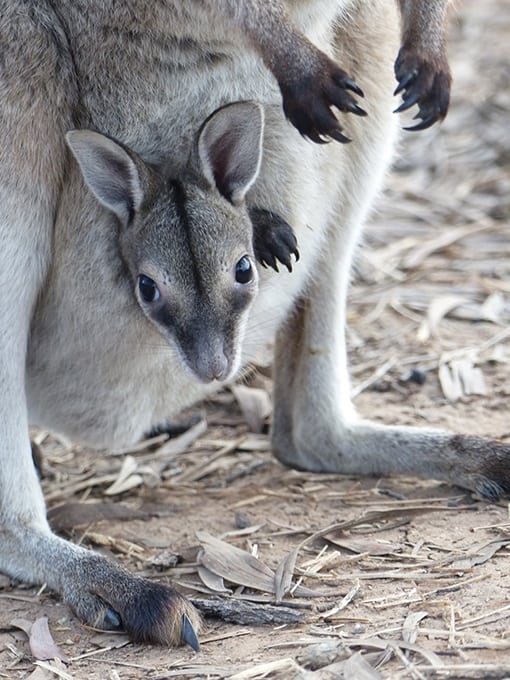A population of bridled nailtail wallabies in Queensland has been brought back from the brink of extinction after conservation scientists led by University of New South Wales (UNSW) Sydney successfully trialled an intervention technique never before used on land-based mammals.
Using a method known as ‘headstarting’, the researchers rounded up bridled nailtail wallabies under a certain size and placed them within a protected area where they could live until adulthood without the threat of their main predators – feral cats – before being released back into the wild.
In an article published in Current Biology, the scientists describe how they decided on the strategy to protect only the juvenile wallabies from feral cats in Avocet Nature Refuge, south of Emerald in central Queensland, where they numbered just 16 animals in 2015.
For decades species was believed extinct
The bridled nailtail wallaby is a small micropod (part of the marsupial family) that grows up to a metre in length, half of which is the tail. It takes its name from the white ‘bridle’ line that runs down the back of the neck and shoulders and a tail spur about 3 to 6mm in length.
Experts believed the species to be extinct from 1937 until 1973. It was only when a fencing contractor reported he’d seen a population of the wallabies living on a property near Dingo in Queensland that the species was rediscovered.
Article lead author, Alexandra Ross, explained that juvenile wallabies under 3kg – or smaller than a rugby football – are easy prey for feral cats.
“Previous studies have shown that more than half of these young bridled nailtail wallabies were killed by feral cats before they could reach adulthood,” Ross said.
Size is a good predictor of animal’s survival
“But when you look at the numbers of adults, the survival rate goes up to 80 percent – which shows that size is a good predictor of survival.
“So we figured if we can just get them through that tough period – when they’re still little and an easy size for a cat to prey on – by putting them in feral-free protected areas, then we could make a positive difference to the population numbers.”
The results more than confirmed the scientists’ hunches. Of the 56 bridled nailtail wallabies that were raised within the headstart enclosure between 2015 and 2018, 89 percent survived to be large enough to be let back into the wild.
The 11 percent that didn’t make it included one that needed to be euthanised due to injury, two found dead from accidents or unknown causes, and four killed by birds of prey.












